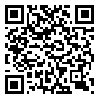Volume 22, Issue 5 (3-2023)
TB 2023, 22(5): 107-120 |
Back to browse issues page
Ethics code: ir.yazd.rec.1401.065
Download citation:
BibTeX | RIS | EndNote | Medlars | ProCite | Reference Manager | RefWorks
Send citation to:



BibTeX | RIS | EndNote | Medlars | ProCite | Reference Manager | RefWorks
Send citation to:
mazloomi O, parsamehr M, zare-shahabadi A. Structural Equation Modeling of the Relationship between Social Stigma of Cancer and Mental Habitus of Cancer among Family Caregivers of Cancer Patients. TB 2023; 22 (5) :107-120
URL: http://tbj.ssu.ac.ir/article-1-3584-en.html
URL: http://tbj.ssu.ac.ir/article-1-3584-en.html
yazd University , parsamehr@yazd.ac.ir
Abstract: (1103 Views)
Introduction:In societies, incorrect beliefs about cancer cause stigma and weaken the health care and patients' treatment. The purpose of this studu is to investigate the impact of cancer habitus on cancer social stigma among family caregivers of cancer patients.
Methods: Survey method was usedand the statistical population included family caregivers of cancer patients in Tehran hospitals in 1401. Sample size included 384 people selected by convenience sampling method of multi-stage stratified type by referring to the hospitals under study. Data collection tool was the standard cancer stigma index questionnaire and the researcher-made cancer habitus questionnaire. Data were analyzed through correlation tests, mean difference, path analysis and structural equation modeling in SPSS and Amos.
Results: According to the results, there was a relationship between cancer stigma (with dimensions of others-avoidance, self-avoidance, and being released) and cancer habitus (with dimensions of enchantment and cure-avoidance); according to the path model, habitus explains 19/6% of the variation in stigma. Moreover, enchantment and cure-avoidance had the highest and lowest contribution to explaning stigma with an impact factor of 0/29 and 0/25. The results of structural equation model test also indicated appropriate fit of the presented conceptual model (GFI=0/973, RMSEA=0/067, CFI=0/958).
Conclusion: Caregivers of cancer patients, as the main supporters of the patient, are always influenced by incorrect cultural stereotypes of society. Identifying different dimensions of habitus (especially the aspect of enchanment), paying more attention to the aspect of being released of stigma, paying attention to the role of education and awareness in reducing false beliefs and more interaction with patients have a significant role in reducing the stigma of cancer and makes it easier for patients to bear the pain and suffering of cancer
Methods: Survey method was usedand the statistical population included family caregivers of cancer patients in Tehran hospitals in 1401. Sample size included 384 people selected by convenience sampling method of multi-stage stratified type by referring to the hospitals under study. Data collection tool was the standard cancer stigma index questionnaire and the researcher-made cancer habitus questionnaire. Data were analyzed through correlation tests, mean difference, path analysis and structural equation modeling in SPSS and Amos.
Results: According to the results, there was a relationship between cancer stigma (with dimensions of others-avoidance, self-avoidance, and being released) and cancer habitus (with dimensions of enchantment and cure-avoidance); according to the path model, habitus explains 19/6% of the variation in stigma. Moreover, enchantment and cure-avoidance had the highest and lowest contribution to explaning stigma with an impact factor of 0/29 and 0/25. The results of structural equation model test also indicated appropriate fit of the presented conceptual model (GFI=0/973, RMSEA=0/067, CFI=0/958).
Conclusion: Caregivers of cancer patients, as the main supporters of the patient, are always influenced by incorrect cultural stereotypes of society. Identifying different dimensions of habitus (especially the aspect of enchanment), paying more attention to the aspect of being released of stigma, paying attention to the role of education and awareness in reducing false beliefs and more interaction with patients have a significant role in reducing the stigma of cancer and makes it easier for patients to bear the pain and suffering of cancer
Type of Study: Research |
Subject:
Special
Received: 2023/09/3 | Accepted: 2023/12/3 | Published: 2024/03/16
Received: 2023/09/3 | Accepted: 2023/12/3 | Published: 2024/03/16
Send email to the article author
| Rights and permissions | |
 |
This work is licensed under a Creative Commons Attribution-NonCommercial 4.0 International License. |







